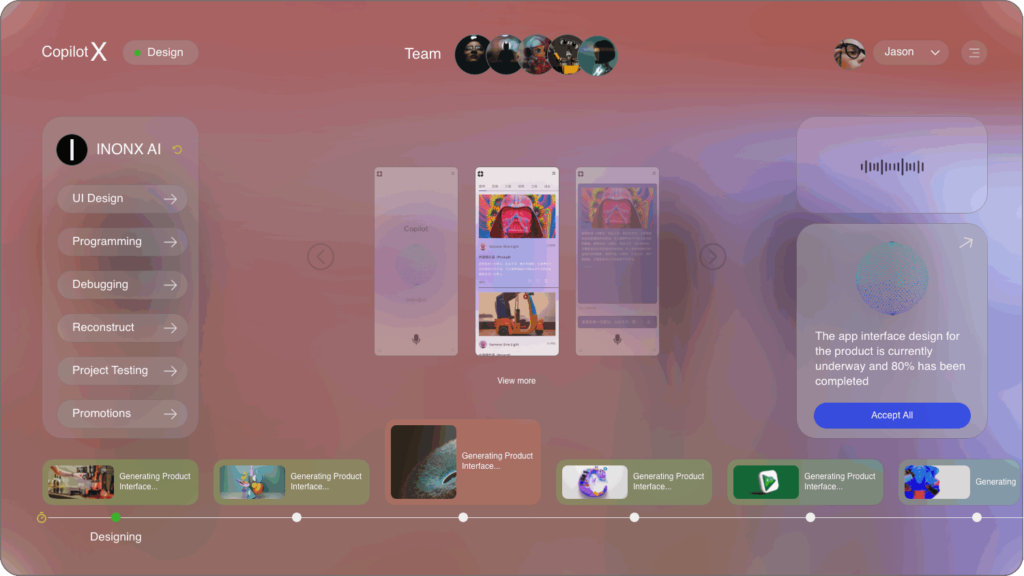2024 has emerged as a groundbreaking year for artificial intelligence (AI), as major players in the industry unveil updates and new models that promise to revolutionize how we interact with technology. From Google’s Gemini 1.5 Pro with enhanced multimodal capabilities to a range of specialized tools that serve various sectors including healthcare, business automation, and creative industries, the latest advancements position AI as an integral part of modern innovation. This article explores the most significant recent developments in AI, focusing on the newly released models, sophisticated APIs, cutting-edge products, and emerging technologies that set the stage for a transformative future.
.
**Google’s Gemini 1.5 Pro: A Leap in Multimodal Capabilities**
In early 2024, Google launched its latest AI model, Gemini 1.5 Pro, which features remarkable advancements in multimodal capabilities. This iteration not only enhances text comprehension but also excels in processing images, audio, and even video inputs, making it a powerful tool for various applications across industries. One of the most compelling features of Gemini 1.5 Pro is its extended context understanding; the model can now analyze and synthesize information over longer conversational threads and more extensive document sets.
This capability marks a significant improvement over previous models, which often struggled with maintaining context over extended interactions. Gemini 1.5 Pro’s ability to engage in real-time dialogue across diverse inputs allows developers to create more intuitive and interactive applications, ranging from virtual assistants to personalized learning platforms in education.
**Sources:** Google AI Blog, TechCrunch.
.
**Innovative Tools and APIs: Bridging Industries through AI**
The year 2024 has also seen a surge in the availability of advanced APIs and tools designed to integrate AI capabilities into existing systems across numerous industries. One such product is OpenAI’s API, which has received updates that include support for Self-Adaptive Learning models. These enhancements enable businesses to customize the AI’s learning algorithms according to their unique operational nuances. As a result, organizations can expect improved performance tailored to specific tasks, such as automated customer interactions or data analysis.
Moreover, the rise of Point-of-Sale (POS) Robots marks a notable shift in retailer interactions and consumer experiences. These self-service systems equipped with AI can now process transactions, provide product information, and even manage inventory levels in real time. By leveraging natural language processing and machine learning algorithms, POS robots can facilitate seamless customer service while alleviating labor costs.
**Sources:** OpenAI Official Site, Robotics Business Review.
.
**Emerging Technologies: Specialized Use Cases Addressed by AI**
A significant area of growth in AI is the development of specialized models aimed at addressing niche sectors, particularly with a focus on reliability and fairness. This is evident in the rise of debiased language models aimed to counteract biases common in LLMs (large language models). Several tech companies, including Microsoft and Anthropic, are making strides in creating Unsupervised Learning Techniques that modify LLM training processes to minimize bias. As a result, AI tools can offer more balanced perspectives, thereby enabling ethical applications in sensitive areas such as recruitment, healthcare, and media.
Furthermore, the focus on reliable AI systems has paved the way for the creation of tools that not only enhance productivity but also foster trust among users. By establishing robust frameworks for deployment, companies can ensure that AI systems operate transparently and responsibly, catering specifically to their industry requirements.
**Sources:** Microsoft Research, Anthropic Blog.
.
**Innovative AI Products: Transforming Enterprise and Cybersecurity**
In 2024, we have witnessed the launch of innovative products tailored for enterprise-level solutions and cybersecurity challenges. One standout example is a suite of AI-powered cybersecurity tools developed by CrowdStrike, designed to preemptively identify potential threats through advanced predictive analytics. These AI systems utilize machine learning algorithms to analyze network traffic and identify anomalies that may indicate malicious behavior.
Moreover, in the realm of business automation, companies are adopting AI-driven project management tools equipped with features for team collaboration, automatic scheduling, and workflow optimization. Tools like Trello’s AI assistant can now help project managers by predicting bottlenecks based on historical data, ultimately enhancing team productivity and efficiency.
For the creative industries, Adobe has rolled out AI features in its Creative Cloud suite that assist designers and artists with tasks such as image manipulation, color grading, and even content generation. Using Gemini 1.5 Pro’s capabilities, these products allow for unprecedented levels of creativity by offering personalized content suggestions based on user inputs and preferences.
**Sources:** CrowdStrike Press Release, Adobe Blog.
.
**AI in Healthcare: Enhancing Patient Care and Outcomes**
The application of AI in healthcare continues to expand, especially with the recent integration of sophisticated AI models into clinical practices. Companies like Zebra Medical Vision have introduced AI systems that assist in medical imaging analysis, providing doctors with insights that augment diagnostic accuracy. These AI models leverage vast datasets of medical histories, enabling clinicians to make more informed decisions.
Another significant advancement is in telemedicine, where AI solutions streamline patient data management and improve virtual consultations. Intelligent chatbots are now capable of conducting preliminary assessments and triaging patients, thus saving valuable time for healthcare professionals while ensuring timely interventions for patients.
**Sources:** Zebra Medical Vision, HealthTech Magazine.
.
**Impact on Business Automation and Education**
AI’s profound influence on business automation and education cannot be overstated, making workflows more efficient and learning experiences more engaging. In education, AI platforms are harnessing Self-Adaptive Learning techniques to customize learning paths for students. These systems analyze a student’s progress and tailor educational content to match their learning pace, thereby enhancing overall learning outcomes. For instance, platforms such as Coursera and Khan Academy have integrated advanced AI algorithms to foster personalized learning experiences.
Similarly, in the business sector, AI applications for automating repetitive simple tasks—such as data entry, invoicing, and report generation—are increasingly commonplace. These functionalities not only save time but also reduce human error. Enterprises can focus their human capital on strategic initiatives rather than mundane administrative tasks.
**Sources:** Coursera, Khan Academy, McKinsey & Company.
.
**Conclusion: The Road Ahead for AI in 2024 and Beyond**
As we progress through 2024, the advancements in artificial intelligence are shaping the present and future landscape of technology across various sectors. From robust models like Google’s Gemini 1.5 Pro to the innovative tools addressing industry-specific challenges, the progress indicates a broader acceptance and integration of AI into everyday operations. The promise of Self-Adaptive Learning, enhanced multimodal capabilities, and the continuous push for ethical AI practices underscore the transformative nature of these technologies. Industries ranging from healthcare to education are poised to benefit significantly, paving the way for a future where AI acts not just as a tool, but as a pivotal partner in progress.
As developments continue, stakeholders across sectors must engage proactively in understanding and leveraging these advancements, ensuring that the deployment of AI remains responsible and beneficial for society at large.
**Sources:** Various Tech News Outlets, Industry Reports.
.

























